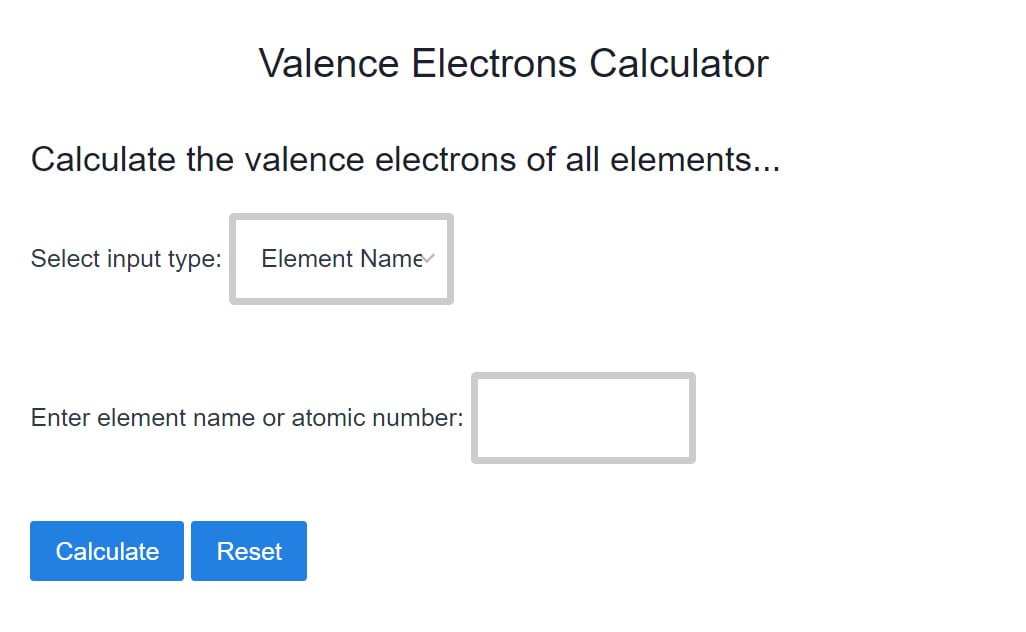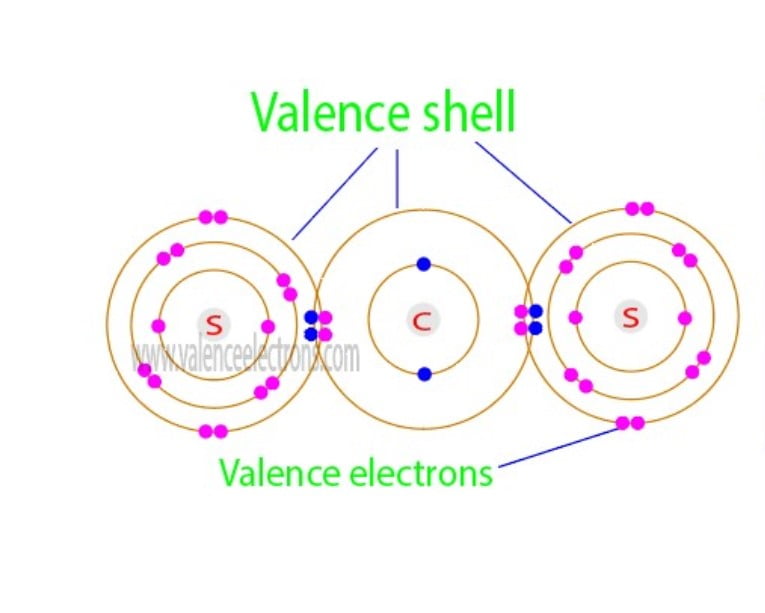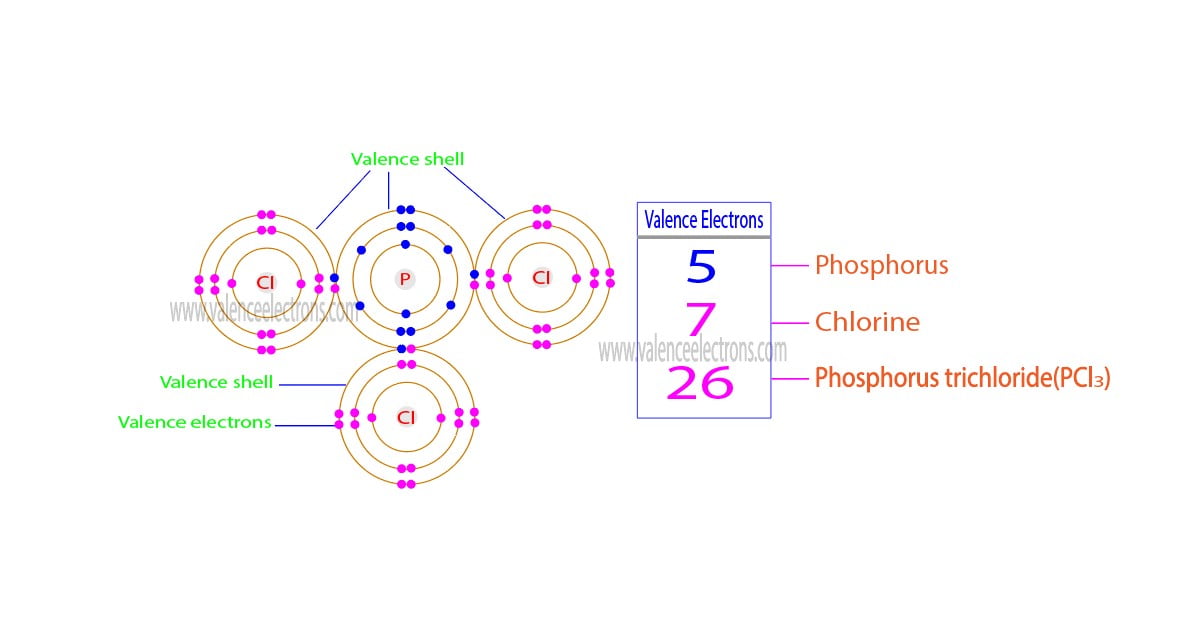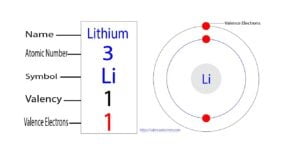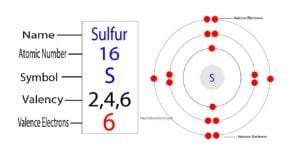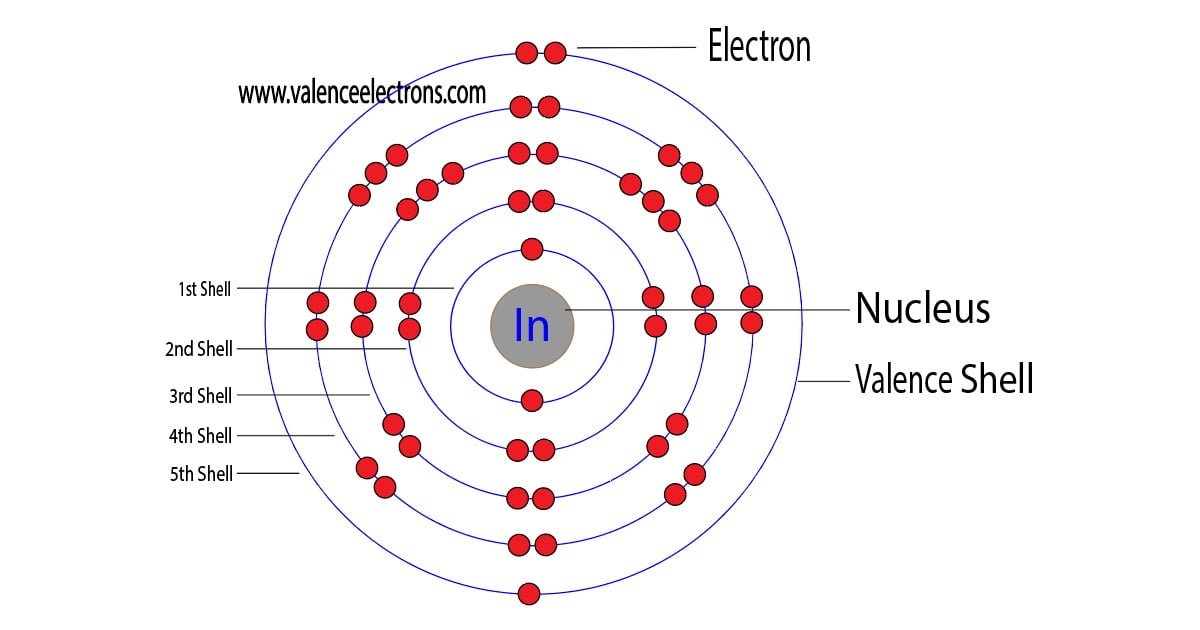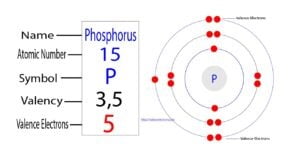How to Find the Valence Electrons for Vanadium (V)?
The element of group-5 is vanadium and its symbol is ‘V’. Vanadium is a transition element. Therefore, the valence electrons of vanadium are determined differently.
This article discusses in detail how to easily calculate the number of valence electrons in vanadium. Hopefully, after reading this article you will know in detail about this.
What are the valence electrons of vanadium?
The 1st element in group-5 is vanadium. The elements in groups 3-12 are called transition elements. The valence electrons are the total number of electrons in the last orbit.
But in the case of transition elements, the valence electrons remain in the inner shell(orbit).
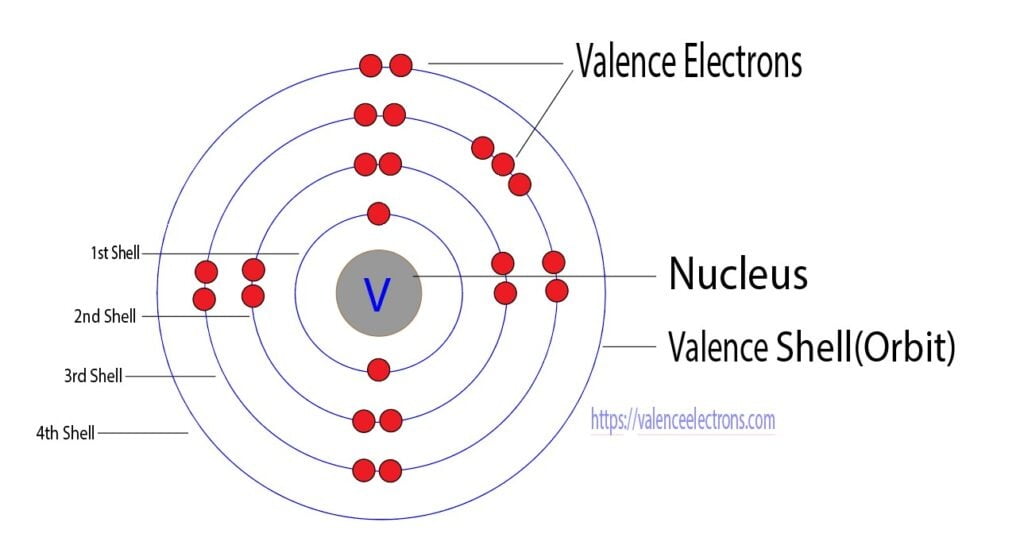
Because the electron configuration of vanadium shows that the last electrons enter the d-orbital. The valence electrons determine the properties of the element and participate in the formation of bonds.
How do you calculate the number of valence electrons in a vanadium atom?
The valence electrons have to be determined by following a few steps. The electron configuration is one of them. It is not possible to determine the valence electron without electron configuration.
Knowing the electron configuration in the right way, it is very easy to determine the valence electrons of all elements.
The valence electrons of the transition element cannot be determined according to Bohr’s atomic model. Because the valence electrons of the transition elements are located in the inner shell.
However, the valence electron of the transition element can be easily determined according to the Aufbau principle. Now we will learn how to determine the valence electron of vanadium(V).
Step-1: Determining the total number of electrons in vanadium
1st we need to know the total number of electrons in the vanadium atom. To know the number of electrons, you need to know the number of protons in vanadium.
And to know the number of protons, you need to know the atomic number of the vanadium element. To know the atomic number we need to take the help of a periodic table.
It is necessary to know the atomic number of vanadium elements from the periodic table. The atomic number is the number of protons. And electrons equal to protons are located outside the nucleus.
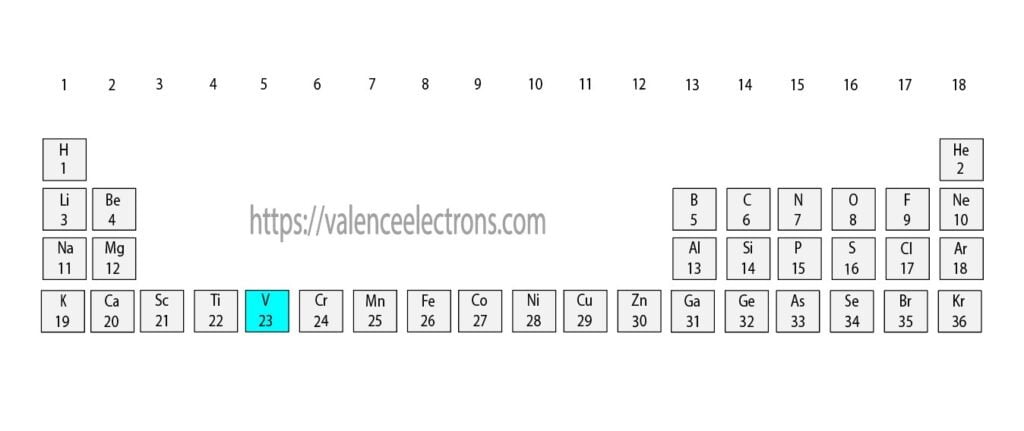
That is, we can finally say that there are electrons equal to the atomic number in the vanadium atom. From the periodic table, we see that the atomic number of vanadium is 23. That is, the vanadium atom has a total of twenty-three electrons.
Step-2: Need to do electron configuration of vanadium
Step 2 is very important. In this step, the electrons of vanadium have to be arranged.
The electron configuration of vanadium shows that the first shell of vanadium has two electrons, the second shell has eight electrons, the 3rd shell has eleven electrons and the 4th shell has two electrons.
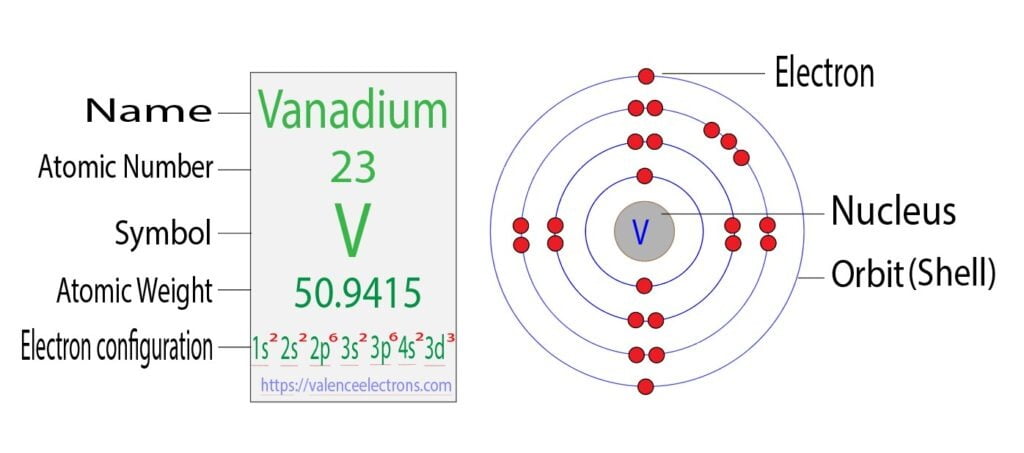
Step-3: Determine the valence shell and calculate the total electrons
The third step is to diagnose the valence shell(orbit). The last shell after the electron configuration is called the valence shell.
The total number of electrons in a valence shell is called valence electrons. But the valence electrons of the transition elements are located in the inner orbit.
For the transition element, the valence electrons have to be determined by adding the total electrons of the d-orbital to the electrons in the last orbit of the atom.
The electron configuration of vanadium shows that the last shell of vanadium has two electrons and the d-orbital has a total of three electrons. Therefore, the valence electrons of vanadium are five.
Video for Find the Valence Electrons for Vanadium (V)
What is the valency of vanadium?
The ability of one atom of an element to join another atom during the formation of a molecule is called valency(valence). There are some rules for diagnosing valency.
The number of electrons in an unpaired state in the last orbital after the electron configuration of an atom is called the valency of that element.
Also, valency is determined from the electron configuration of the element in the excited state.
The electron configuration of vanadium in the ground state will be 1s2 2s2 2p6 3s2 3p6 3dxy1 3dyz1 3dzx1 4s2.
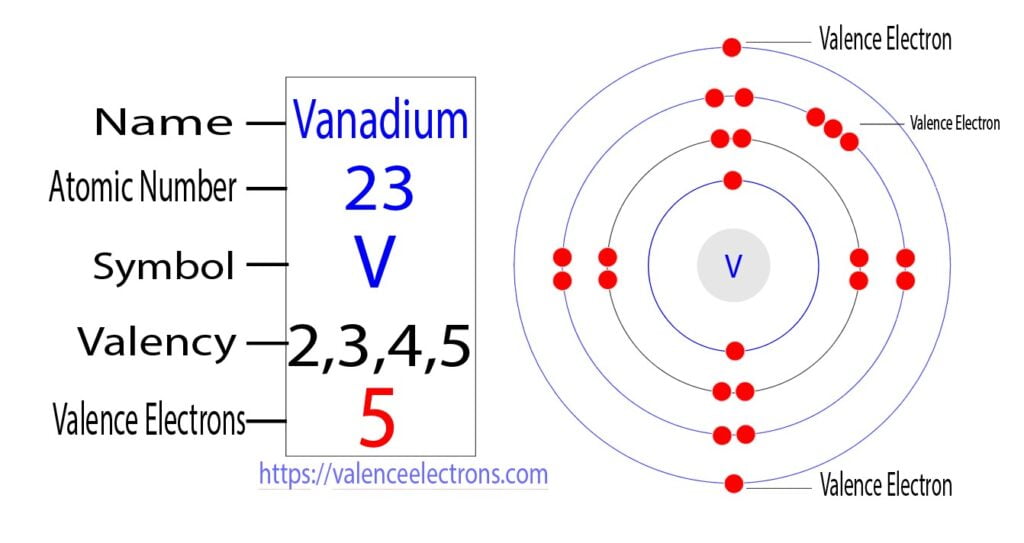
This electron configuration shows that the vanadium atom has three unpaired electrons. So the valency of vanadium is 3. The oxidation states of vanadium(V) are +2, +3, +4 +5.
Therefore, the valency of vanadium is 2,3,4,5. The valency and oxidation states depend on the bond formation. Vanadium 4 and 5 valency is used most of the time.
How many valence electrons does vanadium ion(V2+, V3+) have?
The elements that have 1, 2, or 3 electrons in the last shell donate the electrons in the last shell during bond formation. The elements that form bonds by donating electrons are called cation.
The vanadium atom donates two electrons in 4s orbital to convert a vanadium ion(V2+). Therefore vanadium is a cation element. There are two types of vanadium ion(V2+, V3+).
V – 2e– → V2+
Here, The electron configuration of vanadium ion(V2+) is 1s2 2s2 2p6 3s2 3p6 3d3.
This electron configuration of vanadium ion(V2+) shows that vanadium ion has three shells and the last shell has eleven electrons. For this, the valence electrons of the vanadium ion(V2+) are eleven.
V – 3e– → V3+
On the other hand, The electron configuration of vanadium ions(V3+) is 1s2 2s2 2p6 3s2 3p6 3d2.
This electron configuration of vanadium ion(V3+) shows that vanadium ion has three shells and the last shell has ten electrons. In this case, the valence electrons of the vanadium ion(V3+) are ten.
